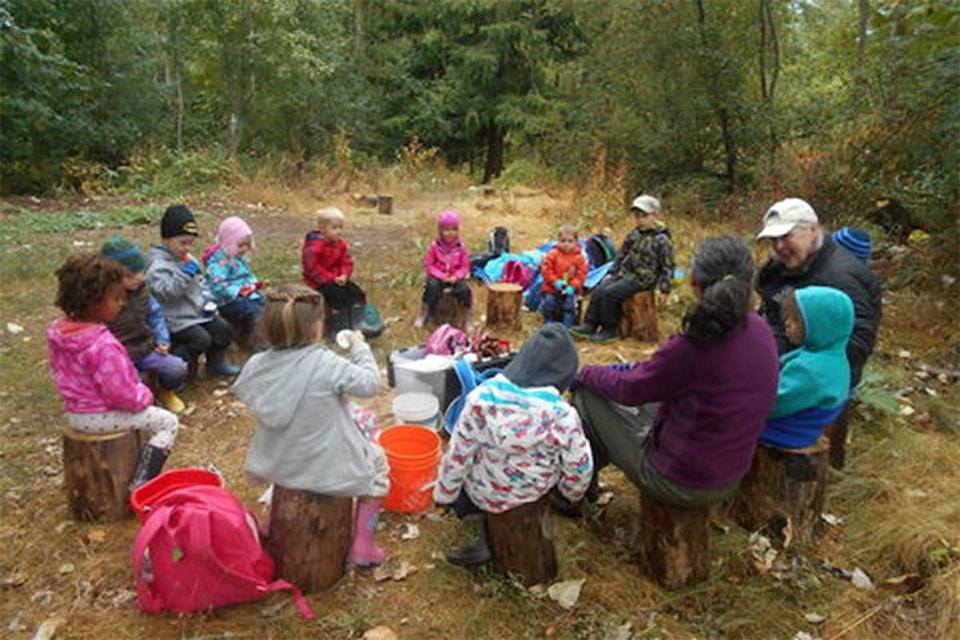It’s back to school time, and some eager Creston children will soon be headed to their forested classrooms, come rain or shine! Nature Explorers for Homeschoolers (K-4) will start meeting behind the Wynndel Hall on Sept 27, and Kootenay Nature School (3-5) starts this week. The Canyon-Lister Elementary School forest is a jewel for CLES students, Nature School preschoolers, and families who take part in the spring Ready, Set, Learn Nature Program. Thank you to whoever had the foresight to preserve it, years ago. With 2.5 acres of fenced forest, wildlife, trails for meandering, hills for slipping and sliding—we think it’s a kid’s dream come true.
As an outdoor educator, I spend a fair amount of time connecting with outdoor programs across Canada and North America, for research and networking purposes, I thought I would take this week to talk about the ‘forest school’ and ‘nature connection’ movements. Creston’s Kootenay Nature School is part of a global trend to provide increased outdoor time for children of all ages, and opportunities for kids to feel at home in nature.
When you see a video online or hear about a forest school in Canada, or Norway, or Germany, there are a few key things they usually have in common. First, they focus on providing children with regular and repeated access to the same forest setting, a practice that allows children to really connect with a patch of forest (doesn’t have to be big!). Kids might come to have a favourite tree during their quiet ‘sit spot’ time, or know exactly which stump they want to turn into a fire station during active play. They learn where birds nest and apples grow, and where to find the best worms. They feel pride and connection to their little patch of forest, something which research shows can carry on into adulthood.
Another commonality is that children use mostly loose parts for open-ended play and inquiry, such as sticks, rocks, leaves and whatever else they can find in the forest. At Kootenay Nature School, we provide buckets, trowels, ropes, magnifying glasses and a few extra resources like clipboards for drawing, pulleys and occasionally craft materials. Children leave their toys at home and have a blast using their imaginations.
Here in the Kootenays the movement is growing strong: Cranbrook offers a drop-in nature program for families with young children, and kids in Nelson can attend ‘The Forest Path.’ Fernie has it’s own Forest School, and Rossland has One Tree Adventures. All of these programs have been developed in the last few years, responding to an increased desire for kids to spend more time outdoors, from the youngest ages.
Thank you to the Rotary Club of Creston for providing a donation towards nature books and field guides for this year’s programs. We love reading in the Tipi and incorporating literacy into our programs. Thank you also to the Gleaner’s and Columbia Basin Trust who have provided grants for operational expenses this year.
